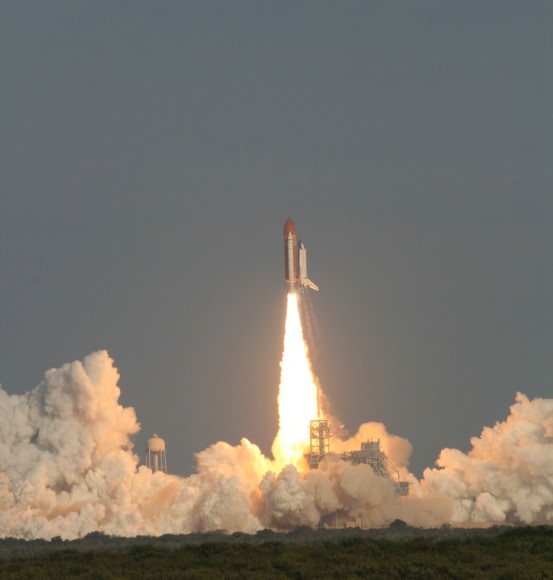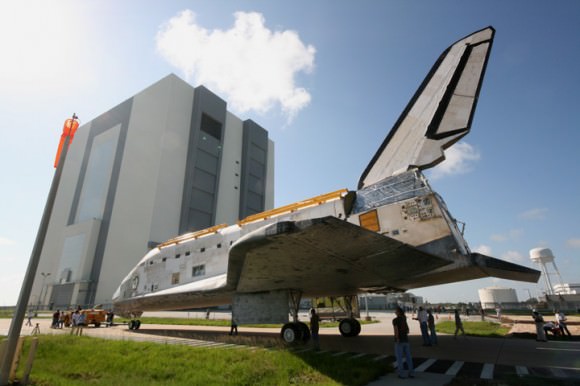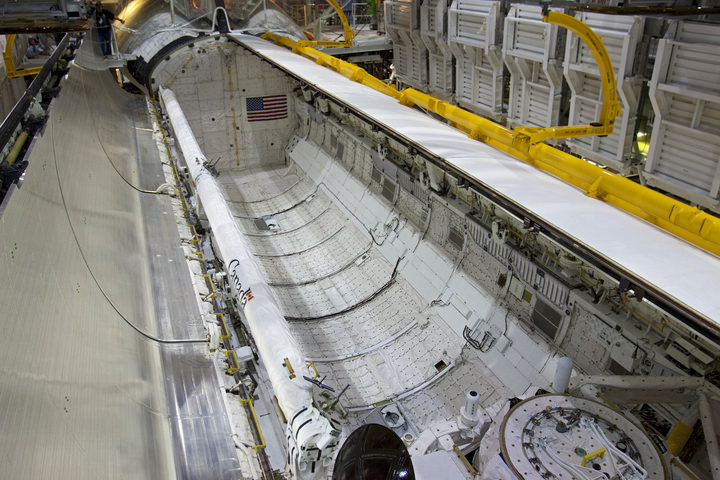[/caption]
Space Shuttle Discovery was powered down forever and the payload bay doors were locked tight for the final time on Friday, Dec. 16, by technicians at NASA’s Kennedy Space Center (KSC) in Florida.
Take a good last glimpse inside the retiring Discovery’s payload bay as the clamshell like doors seal off all indigenous US human spaceflight capability for several years at a minimum.
The historic “Power Down” came after both of the 60 foot long cargo bay doors were swung shut this morning for the last time inside the shuttle hanger known as Orbiter Processing Facility-1 (OPF-1) – in the shadow of the cavernous Vehicle Assembly Building (VAB).
Workers at KSC are in the final stages of the transition and retirement activities that will soon lead to Discovery departing her Florida launch pad forever on her final voyage. They are converting the orbiter from active duty flight status to display as a nonfunctional and stationary museum piece.
Kennedy Space Center Director Robert Cabana, a former space shuttle commander, formally marked the final power down and sealing of Discovery’s payload bay doors at a ceremony in OPF-1 with the skeleton force of remaining shuttle personnel engaged in the decommissioning efforts.
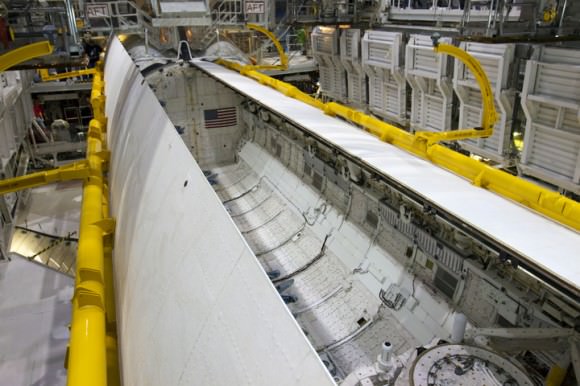
Discovery was the Fleet leader and NASA’s oldest orbiter having flown the most missions. All told Discovery soared 39 times to space from her maiden flight in 1984 to her last touchdown on the STS-133 mission in March 2011.
In between, Discovery deployed the iconic Hubble Space Telescope, launched the Ulysses solar probe and numerous other science satellites and Department of Defense surveillance platforms, conducted the first shuttle rendezvous with Russia’s Mir Space Station and delivered key components to the International Space Station including the last habitable module.
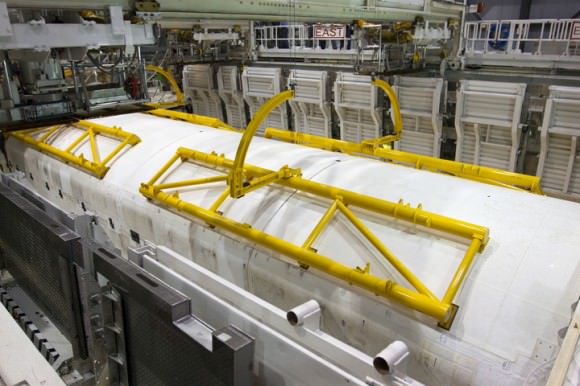
Discovery flew both ‘return to flight’ missions following the Challenger and Columbia tragedies as well as the second flight of Astronaut and Senator John Glenn, first American to orbit the Earth.
Discovery has been thoroughly cleansed and cleared of all hazardous materials in preparation for making the vehicle safe for public display at her new and final resting place, the Smithsonian’s National Air and Space Museum Steven F. Udvar-Hazy Center in Chantilly, Va..
Technicians re-installed the three power generating fuel cells after draining and purging all the toxic materials and fuels from the fuel lines and assemblies. Three replica space shuttle main engines were also installed last week.
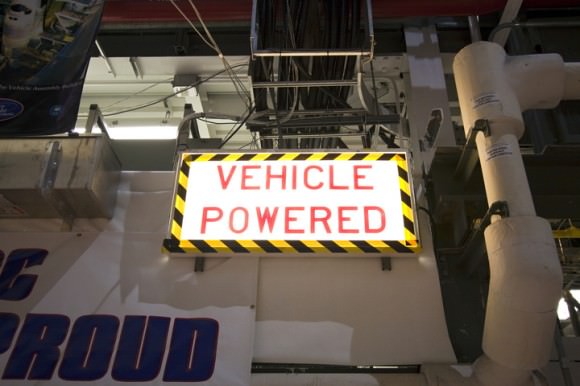
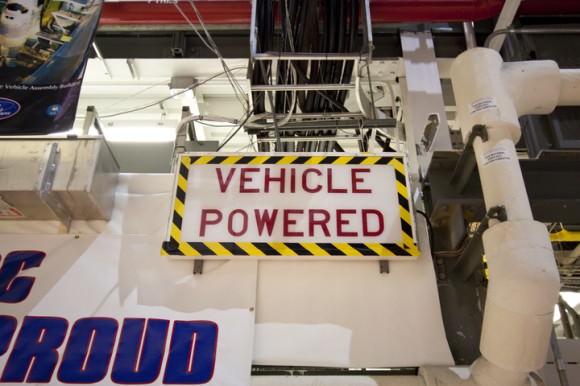
In 2012, the 100 ton orbiter will be hoisted piggyback atop NASA’s specially modified 747 carrier aircraft. Discovery will take flight for the last time in April and become the center piece at her new home inside the Smithsonian’s spaceflight exhibition in Virginia.
To make way for Discovery, the prototype shuttle Enterprise currently housed at the Smithsonian will be hauled out and flown to New York City for display at the Intrepid, Sea, Air and Space Museum.
Altogether, Discovery spent 365 days in space during the 39 missions, orbited Earth 5,830 times and traveled 148,221,675 miles during a career spanning 27 years.
There is nothing on the horizon comparable to NASA’s Space Shuttles. Their capabilities will be unmatched for several decades to come.
America is now totally dependent on the Russians for launching US astronauts to space until privately built ‘space taxis’ from firms like SpaceX, Boeing and Sierra Nevada are ready in perhaps 4 to 6 years.
